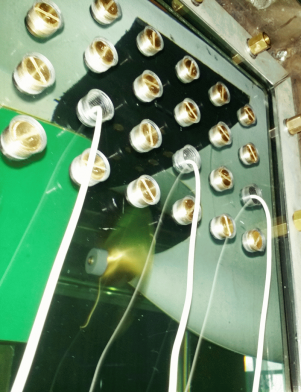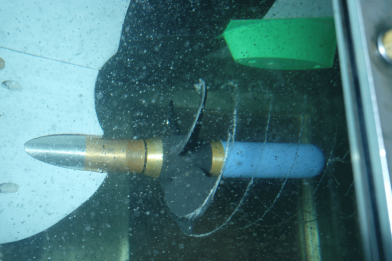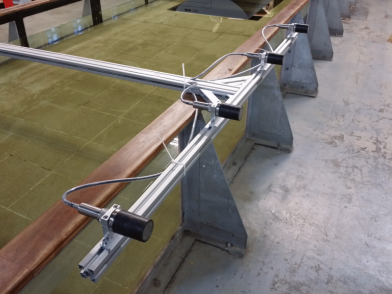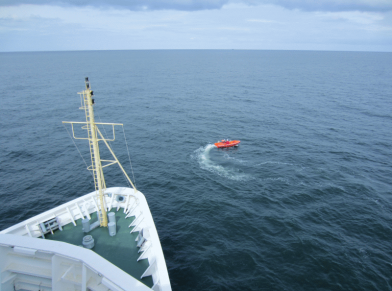The main cause of man-made noise emissions in the sea is currently the propeller. Studies of propeller induced noises are carried out in the form of hydroacoustics, structure-borne noise and pressure pulse measurements, both in model testing as well as for full-scale [1].
The model measurements for determining cavitation noise are performed in the cavitation tunnel. Here hydrophones (on a dummy model or decoupled flow water tank), accelerometers and pressure sensors are used which cover the widest possible frequency range. The measurements and the subsequent scaling of the noise to the full-scale are carried out according to the format recommended by ITTC [2], [3].
In addition to towing tank pressure pulse measurements, hydroacoustic measurements with a hydrophone line consisting of 16 individual hydrophones are carried out when the ship’s model is passing by [3]. To distinguish and localise sound sources, multiple hydrophones are arranged as an “acoustic camera”. This makes it possible to detect and analyse the noise generation at the bow of a model separately from the propeller-induced noise.
Furthermore, onboard measurements for different issues based on the full-scale ship are offered. In addition to underwater sound, far-field measurements with hydrophones from dinghy, as well as pressure pulse and acceleration measurements on the ship are possible.
Themenbezogene Referenzen/Forschungsprojekte
[1] Schulze, R.: Hydroakustik, 5. SVA-Forschungsforum, Potsdam, 26. Januar 2012
[2] Klose, R.; Schulze, R.: Körperschallmessungen zur Prognose kavitationsbedingter Erosion an Schiffspropellern, Kolloquium Kavitation und Kavitationserosion, Ruhr-Universität Bochum, 08./09. Dezember 2014
[3] Klose, R.; Schulze, R.: Körperschallmessungen zur Prognose kavitationsbedingter Erosion an Schiffspropellern, 8. SVA-Forschungsforum, Potsdam, 29. Januar 2015
[4] Schulze, R.: Messung des Propulsions- und akustischen Verhaltens am Heavy Lift Vessel „Anne Sofie“ von SAL, Ges. zur Förderung der SVA, Potsdam, 27. Juni 2014



